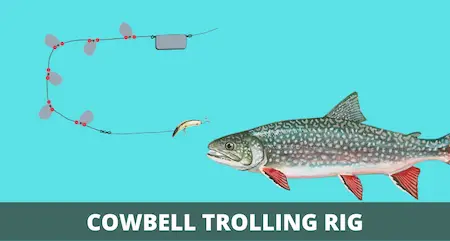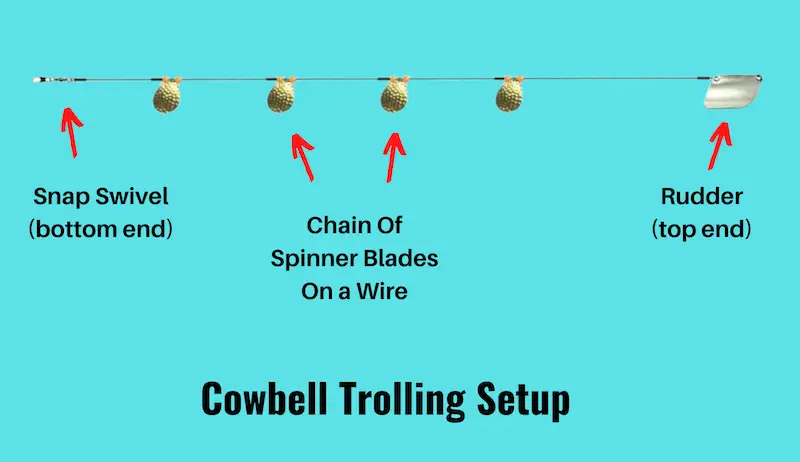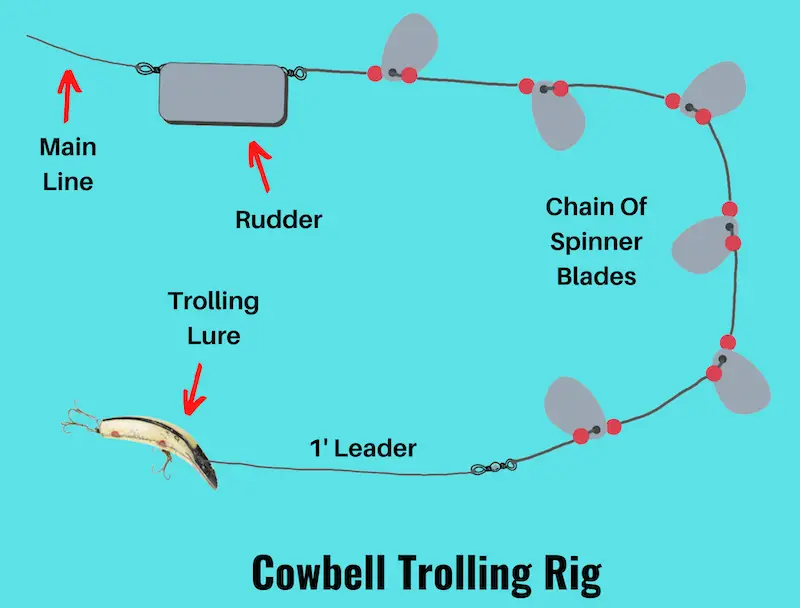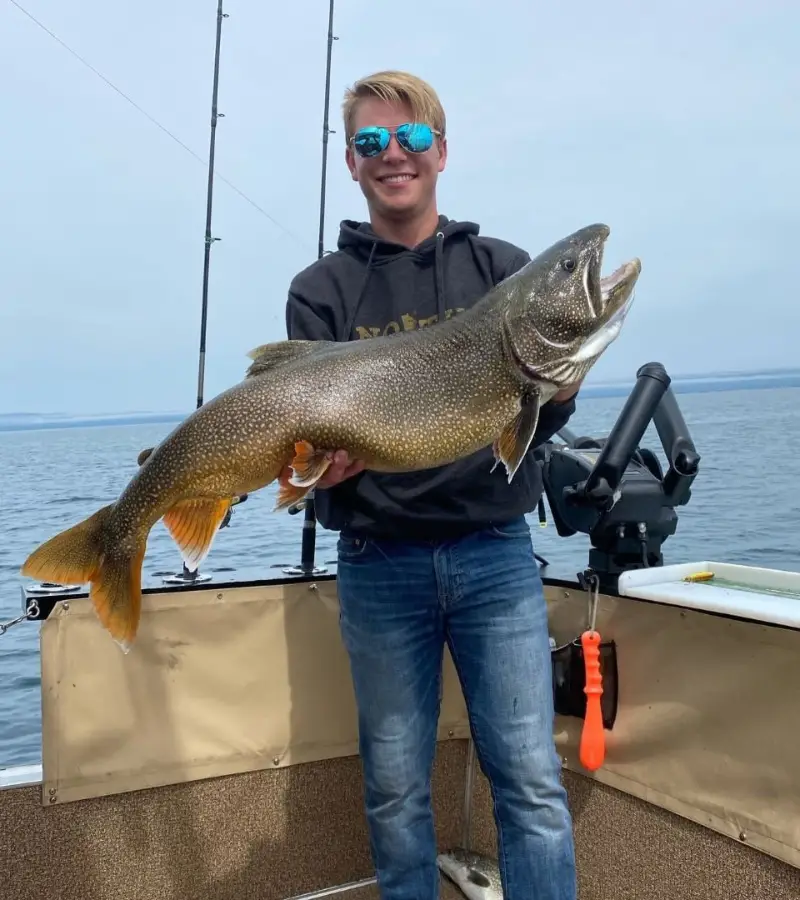Cowbell Trolling Rig (Setup & How-to Guide with Pictures)
PUBLISHED 26 JULY 2023
by Robert Ceran
Are you planning to use a cowbell rig for trolling, but aren’t sure how to set it up, or how to fish it for the best results?
While the cowbell trolling rig is a tried and tested setup for lake trout and salmon that has been catching fish for over a century, it can be tricky to set up and fish correctly.
In this article I’ll show you how to set up the cowbell trolling rig, and will aso cover what lures and bait to use with it, and how to troll it to catch more fish.

What is a cowbell trolling rig (and what is it good for)?
A cowbell trolling rig is an attractor setup used for salmon and lake trout trolling. It consists of a long wire with 4 to 10 spinner blades attached along its length, as well as a rudder at its top end, which helps to avoid line twist due to the rotating spinner blades.

The spinner blades of the cowbell rig rotate around its wire when it is pulled through the water, and this generates vibrations and flashes of light in the water, which in turn attract the attention of lake trout and salmon in a wide radius around your boat.
When the fish come in closer to investigate the source of this commotion, they will find your trolling lure, which is rigged behind the cowbell setup, which often triggers a strike.
The cowbell rig has been catching lake trout consistently for a long time, and it is most often used with downriggers to target lake trout in deep lakes. It also works well for kokanee and salmon.
Cowbell trolling rig components
You’ll need the following tackle components to set up a cowbell trolling rig:
- Pre-rigged cowbell setup
- 50 to 60 lb test braided main line
- 20 to 30 lb test fluorocarbon leader
- Trolling lure of choice
The leader should be weaker than the main line, which allows you to break it off if your lure should get snagged, and my preference is for fluorocarbon, since this is practically invisible underwater.
How to set up a cowbell trolling rig

Start by tying your main line to the top of the cowbell setup (which is the end with the rectangular rudder).
Next, measure out about 1 foot of fluorocarbon or monofilament leader, and tie that to the bottom end of the cowbell wire.
Finally, either tie the other end of the leader directly to a trolling lure, or to a snap swivel, which allows you to swap out your lures quickly.
What bait should you use with a cowbell trolling rig?
The most commonly used baits with cowbell trolling rigs are lake trout spoons and crankbaits, but you can use pretty much any trolling lure with this setup, including inline spinners, Spin-n-Glo rigs, plugs, hoochies, swimbaits, or even dead baitfish on a meat rig.
How to fish a cowbell trolling rig
The cowbell trolling rig is most often used for summer trolling on big lakes, where it’s necessary to cover a lot of ground in order to find lake trout holding in deep water.

Image source: instagram@happyhookercharter
Since the spinner blades of the cowbell setup create a lot of flash and vibration in the water, this helps to draw in lake trout from far away, and get them close enough to find your trolling lure.
Trolling a cowbell rig with a downrigger
Since summer lake trout retreat to deep water of 80 feet or even more, the cowbell rig for trolling is usually used with a downrigger to reach those depths.
The main line is attached to the downrigger weight with a release clip, and is then lowered down to the desired depth together with the downrigger lead ball.
When a lake trout grabs the bait, the line is released from the clip, and you have to reel in the line as fast as possible to set the hook and fight the fish.
Final word of advice: While you can opt to build your own cowbell setup, I prefer to get this ready made, and personally like the Cowbell Lake Troll from Luhr Jensen.
